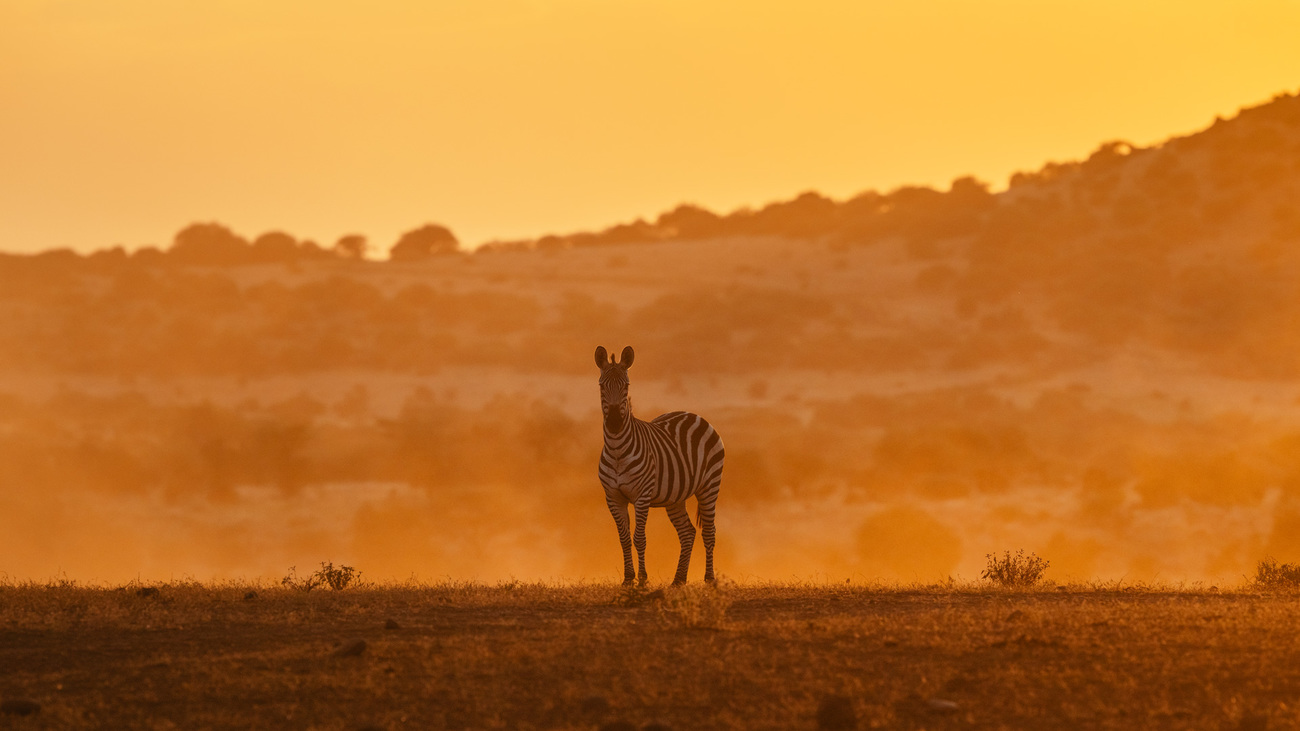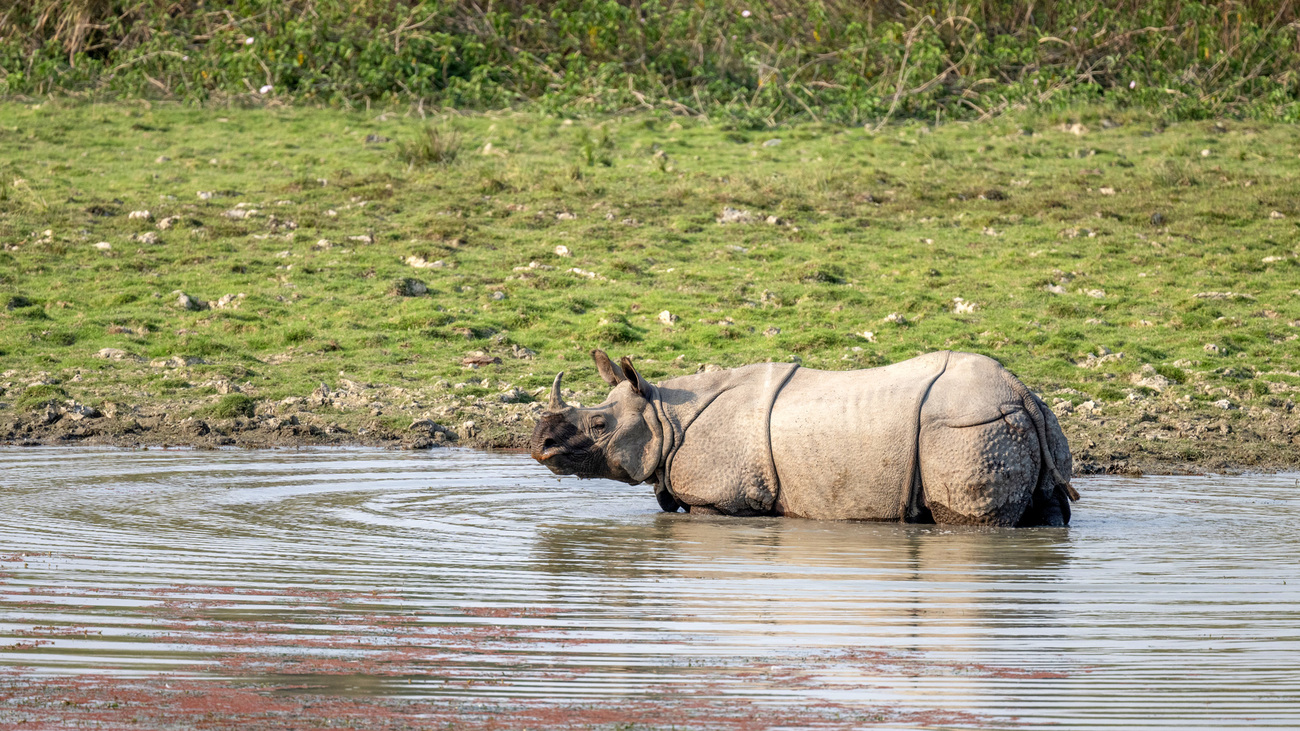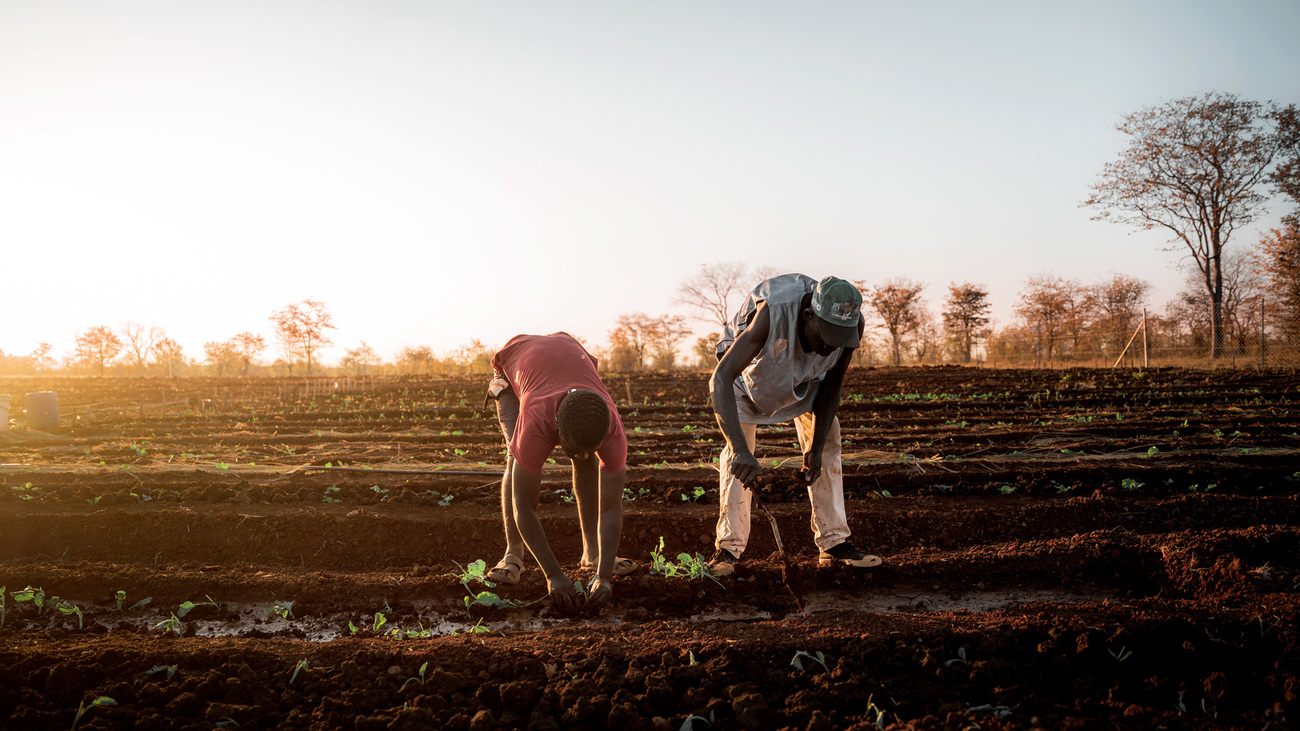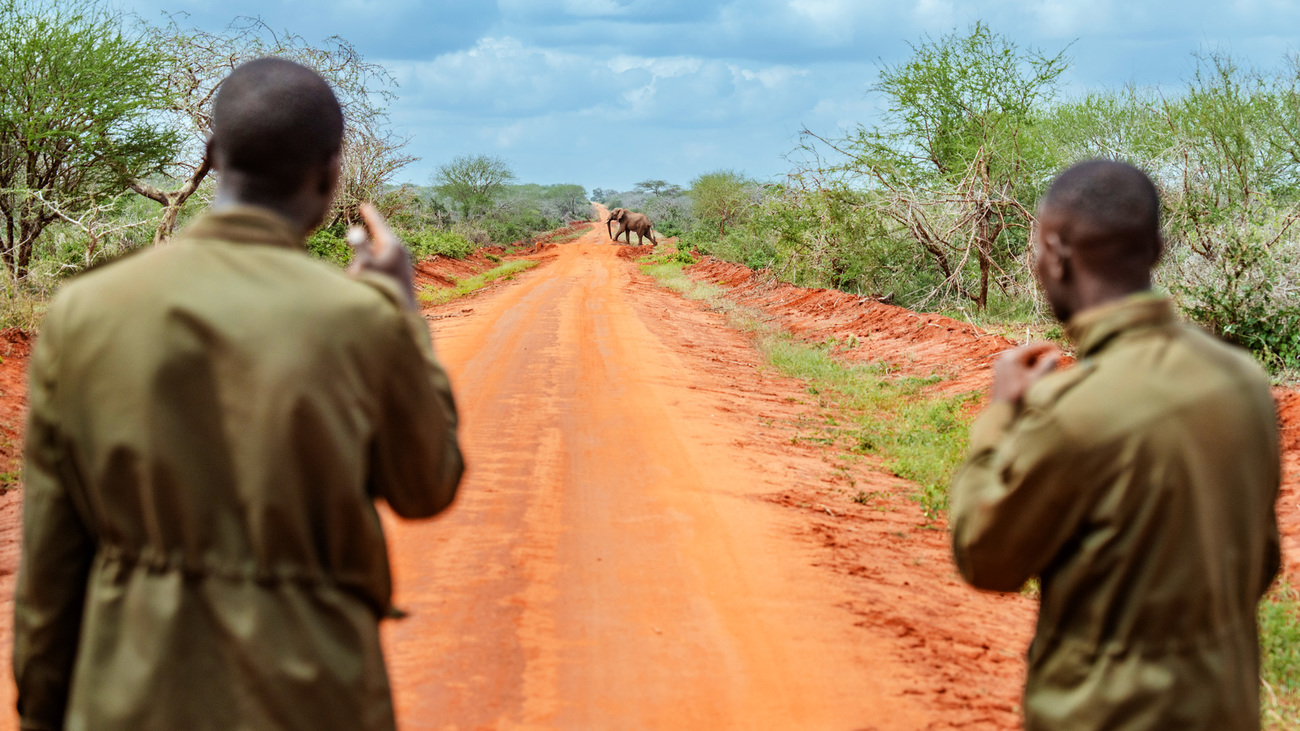Blog
Kenya’s Lamu Port can balance economic development and environmental protection
Read more8 nature-based climate solutions that protect our planet
Climate change is harming nature—it’s causing disasters like droughts and floods to strike more often and taking a devastating toll on biodiversity. Yet nature itself is critically important in helping us mitigate, adapt to, and address loss and damage from climate change.
2023 was the warmest year on record, and 2024 is likely to follow suit. As global temperatures are expected to rise by 1.5°C by 2040 and more than one million animal and plant species face extinction, it’s becoming increasingly urgent to put nature-based climate solutions—actions that protect, conserve, restore, sustainably use, and manage natural or modified ecosystems—into practice for the health of the planet. Such nature-positive solutions are central to IFAW’s strategy to tackle the climate crisis.
Here are eight nature-based climate solutions IFAW is pursuing to help protect the planet and the animals and people who call it home.

Climate change is closely linked to biodiversity loss. Protecting and restoring biodiverse ecosystems and the wild animals that inhabit them—such as elephants and rhinos—allow these animals to persist and continue to perform key ecosystem services. An example of this is how elephants gather and disperse seeds through their diet and digestion, which allow plants to flourish.
Conserving biodiversity also helps maintain natural resources such as water, shade, and soil, which enables people and nature to coexist sustainably. When nature thrives, people can thrive without depleting natural resources.
Learn more about IFAW’s landscape conservation work >>
Whales, sharks, phytoplankton, coral, and other marine life also play crucial roles in fighting climate change. Whales feed phytoplankton with their faecal waste, and these tiny organisms together capture about 37 billion tonnes of carbon dioxide per year—about 40% of all carbon dioxide produced.
Similarly, sharks scare sea turtles away from underwater seagrass meadows, which prevents them from overgrazing. As seagrasses are an important holder of blue carbon, sharks protect blue carbon stores. Sharks and whales both also store tonnes of carbon in their bodies.
Not only do coral reefs harbour the highest biodiversity of any ecosystem, hosting more than one quarter of all fish species, but they also provide a variety of ecosystem services such as food, protection from flooding, and ecotourism opportunities.
Find out how IFAW is protecting marine ecosystems around the world >>

Ecosystem reservation is the setting aside of land to preserve its ecological features, such as forests, lakes, rivers, or grasslands. Reservation prevents land from being used for agriculture, roads, housing, or industrial development. Instead, it helps maintain its natural resources for the wildlife that inhabit it.
This is crucial to maintaining biodiversity, as these animals not only need food and water to flourish but also room to roam. Ecosystem reservation also allows plants to thrive, which is important for combatting global warming, as all plants capture and store carbon via photosynthesis.
The carbon stored in the ocean—called blue carbon—is about 50 times greater than the amount in the Earth’s atmosphere. Blue carbon is crucial to mitigating climate change as it keeps carbon from accumulating in the atmosphere.
Animals and plants have the potential to capture and store enough carbon dioxide to keep global warming below 1.5°C, and much of this carbon storage happens in the ocean. Whales, the largest animals on the planet, can store up to 33 tonnes of carbon dioxide during their lifetimes, which then gets held at the bottom of the ocean for centuries after their deaths, rather than getting released into the atmosphere.
One way we can protect the ocean and its ability to capture carbon is by conserving the High Seas—the large swaths of ocean that lie outside national jurisdiction. Help us urge your government to ratify the High Seas Treaty, which would enable the creation of Marine Protected Areas (MPAs) in these parts of the ocean.

Landscape management involves managing critical areas for wildlife that exist within wider, interconnected landscapes, including community lands. Crucial resources like watersheds are being impacted by climate change, and by managing these landscapes effectively—by planting trees, harvesting rainwater and recharging aquifers, agroforestry, holistic rangeland management, permaculture, and regenerative farming—we protect them into the future.
One place where IFAW is working with communities to engage in sustainable, climate-friendly landscape management is Tsavo, Kenya. The Taita community is planting fruit trees, which help curb soil erosion and flood risk while also maintaining moisture in the ground. Trees reduce the rate of water evaporation and attract cloud cover, which helps prevent drought. These trees also provide health and economic benefits to the community, demonstrating how helping the planet can help people, too.
Disaster response and wildlife rescue focus on saving individual animals to benefit their vulnerable species and protect biodiversity. Many species, such as African savannah elephants and North Atlantic right whales, have such low populations and slow reproductive habits that saving orphaned or injured young is critical to the species’ survival and the role they play in the health of their ecosystem.
A key part of disaster response is building resilience—for communities, for landscapes, and for wild animal populations. IFAW works on the ground to help communities prepare for disasters before they happen and to foster resilience in natural landscapes through ecosystem restoration.
Supporting wildlife-friendly livelihood opportunities for people who live alongside wildlife is another key way to protect biodiversity, and it’s imperative to nature-based climate solutions. It can be done on a large scale, such as supporting the whale watching industry to provide an alternative source of income to nations that once relied on whaling—or it can happen on a smaller scale, such as investing in education programs for women in Africa to learn trades so they can begin wildlife-friendly careers; this can reduce poaching and threats of human-wildlife conflict in these communities.
One way IFAW is promoting wildlife-friendly livelihoods in Malawi and Zambia is by supporting over 5,000 farmers to adopt climate-friendly farming techniques, partnered with COMACO. This project helps communities thrive, keeps the landscape healthy, and reduces the need for chemical fertilisers as well as lessening the strain on forests.
Combatting wildlife crime and wildlife trafficking ultimately keeps more wild species in their natural habitats, which in turn supports biodiversity and keeps these ecosystems healthy. This work involves protecting animals at a policy level and taking action on the ground to help rescue, rehabilitate, and release animals in areas impacted by wildlife crime.
Learn more about how IFAW fights wildlife crime >>

At IFAW, we recognise the urgent need to take climate action using a holistic approach that puts nature front and centre.
Through climate-smart conservation, we acknowledge that climate change is already impacting animals and their habitats. We and our partners help government authorities and community conservancies understand the risks climate change poses and develop effective conservation management plans that can adapt to climate change in the short and long term.
For example, in East and southern Africa, rainfall patterns are increasingly unpredictable, causing more frequent and severe droughts and floods. IFAW is addressing these threats in various ways. In Hwange National Park in Zimbabwe, we are ensuring that elephants and other animals have access to water during droughts. In Kenya, we are working with community conservation groups around Tsavo National Park to understand how climate change is affecting their landscape and adopt climate-smart conservation management measures.
We also promote integrated landscape management, which broadens climate-smart conservation beyond the boundaries of a particular conservation area. For example, in many protected areas where we work, such as Amboseli in Kenya and Hwange in Zimbabwe, elephants travel between conservation areas in search of food, water, and other resources. This range of movement may expand as the climate changes. IFAW’s Room to Roam initiative aims to increase the long-term resilience of elephant populations by connecting core elephant habitats and creating safe passageways.
Disaster response and animal rescue are key areas of our work that ultimately help the climate through nature protection. We actively rescue animals that have been affected by disasters to help these vulnerable populations remain stable in difficult circumstances. For example, when climate change-related bushfires impact koalas in Australia, IFAW responds by rescuing affected animals. Given the critical role so many animals play in maintaining the health of their ecosystems and mitigating climate change, by increasing survival rates of animals in distress, IFAW is protecting biodiversity and supporting nature’s ability to combat the climate crisis.
Our work to fight wildlife crime and trafficking minimises the effects of poaching and ensuring that animals like elephants can continue to play their critical roles in mitigating climate change through the carbon cycle. This work is done both on the ground and at a policy level. On the global climate policy stage, we also advocate for more finance to be invested into nature-based solutions.
Nature-based solutions don’t just protect wildlife; they also make people and the planet more resilient to the changing climate.
Our work can’t get done without you. Please give what you can to help animals thrive.
Unfortunately, the browser you use is outdated and does not allow you to display the site correctly. Please install any of the modern browsers, for example:
Google Chrome Firefox Safari